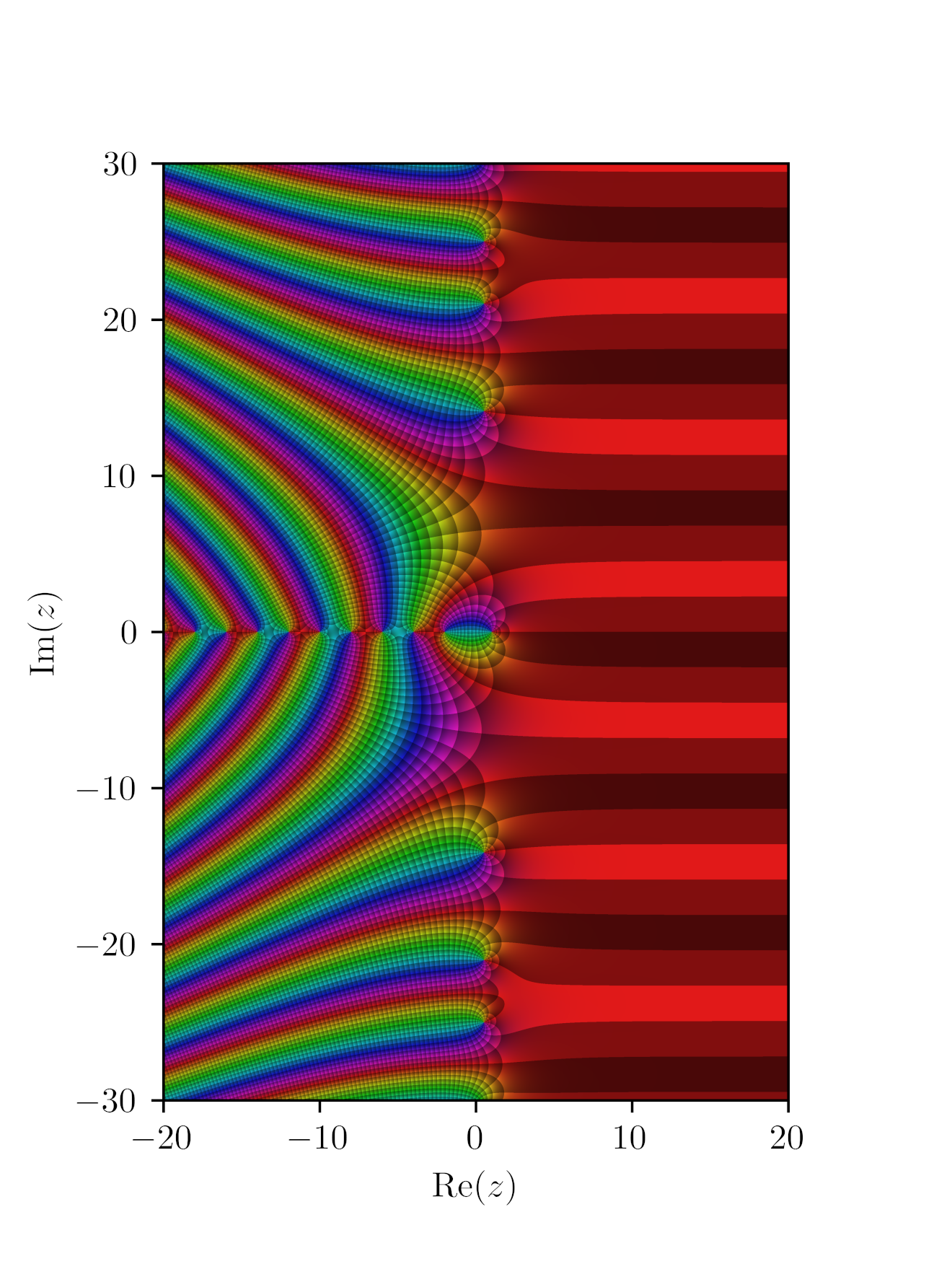|
Discrepancy Of Hypergraphs
Discrepancy of hypergraphs is an area of discrepancy theory. Definitions In the classical setting, we aim at partitioning the vertices of a hypergraph \mathcal=(V, \mathcal) into two classes in such a way that ideally each hyperedge contains the same number of vertices in both classes. A partition into two classes can be represented by a coloring \chi \colon V \rightarrow \. We call −1 and +1 ''colors''. The color-classes \chi^(-1) and \chi^(+1) form the corresponding partition. For a hyperedge E \in \mathcal, set :\chi(E) := \sum_ \chi(v). The ''discrepancy of \mathcal with respect to \chi'' and the ''discrepancy of \mathcal'' are defined by :\operatorname(\mathcal,\chi) := \; \max_ , \chi(E), , :\operatorname(\mathcal) := \min_ \operatorname(\mathcal, \chi). These notions as well as the term 'discrepancy' seem to have appeared for the first time in a paper of Beck.J. Beck: "Roth's estimate of the discrepancy of integer sequences is nearly sharp", page 319-325. Combinatorica, ... [...More Info...] [...Related Items...] OR: [Wikipedia] [Google] [Baidu] |
Discrepancy Theory
In mathematics, discrepancy theory describes the deviation of a situation from the state one would like it to be in. It is also called the theory of irregularities of distribution. This refers to the theme of ''classical'' discrepancy theory, namely distributing points in some space such that they are evenly distributed with respect to some (mostly geometrically defined) subsets. The discrepancy (irregularity) measures how far a given distribution deviates from an ideal one. Discrepancy theory can be described as the study of inevitable irregularities of distributions, in measure-theoretic and combinatorial settings. Just as Ramsey theory elucidates the impossibility of total disorder, discrepancy theory studies the deviations from total uniformity. A significant event in the history of discrepancy theory was the 1916 paper of Weyl on the uniform distribution of sequences in the unit interval. __NOTOC__ Theorems Discrepancy theory is based on the following classic theorems: * ... [...More Info...] [...Related Items...] OR: [Wikipedia] [Google] [Baidu] |
Combinatorics, Probability And Computing
''Combinatorics, Probability and Computing'' is a peer-reviewed scientific journal in mathematics published by Cambridge University Press. Its editor-in-chief is Béla Bollobás (DPMMS and University of Memphis). History The journal was established by Bollobás in 1992. Fields Medalist Timothy Gowers calls it "a personal favourite" among combinatorics journals and writes that it "maintains a high standard". Content The journal covers combinatorics, probability theory, and theoretical computer science. Currently, it publishes six issues annually. As with other journals from the same publisher, it follows a hybrid green/gold open access policy, in which authors may either place copies of their papers in an institutional repository after a six-month embargo period, or pay an open access charge to make their papers free to read on the journal's website. Abstracting and indexing The journal is abstracted and indexed in: According to the ''Journal Citation Reports'', the journal ... [...More Info...] [...Related Items...] OR: [Wikipedia] [Google] [Baidu] |
Unsolved Problems In Mathematics
Many mathematical problems have been stated but not yet solved. These problems come from many areas of mathematics, such as theoretical physics, computer science, algebra, analysis, combinatorics, algebraic, differential, discrete and Euclidean geometries, graph theory, group theory, model theory, number theory, set theory, Ramsey theory, dynamical systems, and partial differential equations. Some problems belong to more than one discipline and are studied using techniques from different areas. Prizes are often awarded for the solution to a long-standing problem, and some lists of unsolved problems, such as the Millennium Prize Problems, receive considerable attention. This list is a composite of notable unsolved problems mentioned in previously published lists, including but not limited to lists considered authoritative. Although this list may never be comprehensive, the problems listed here vary widely in both difficulty and importance. Lists of unsolved problems in mathe ... [...More Info...] [...Related Items...] OR: [Wikipedia] [Google] [Baidu] |
Diophantine Approximation
In number theory, the study of Diophantine approximation deals with the approximation of real numbers by rational numbers. It is named after Diophantus of Alexandria. The first problem was to know how well a real number can be approximated by rational numbers. For this problem, a rational number ''a''/''b'' is a "good" approximation of a real number ''α'' if the absolute value of the difference between ''a''/''b'' and ''α'' may not decrease if ''a''/''b'' is replaced by another rational number with a smaller denominator. This problem was solved during the 18th century by means of continued fractions. Knowing the "best" approximations of a given number, the main problem of the field is to find sharp upper and lower bounds of the above difference, expressed as a function of the denominator. It appears that these bounds depend on the nature of the real numbers to be approximated: the lower bound for the approximation of a rational number by another rational number is larger than ... [...More Info...] [...Related Items...] OR: [Wikipedia] [Google] [Baidu] |
University Of Kiel
Kiel University, officially the Christian-Albrecht University of Kiel, (german: link=no, Christian-Albrechts-Universität zu Kiel, abbreviated CAU, known informally as Christiana Albertina) is a public research university in the city of Kiel, Germany. It was founded in 1665 as the ''Academia Holsatorum Chiloniensis'' by Christian Albert, Duke of Holstein-Gottorp and has approximately 27,000 students today. It is the largest, oldest, and most prestigious university in the state of Schleswig-Holstein. Until 1866, it was not only the northernmost university in Germany but at the same time the 2nd largest university of Denmark. Faculty, alumni, and researchers of Kiel University have won 12 Nobel Prizes. Kiel University has been a member of the German Universities Excellence Initiative since 2006. The Cluster of Excellence The Future Ocean, which was established in cooperation with the GEOMAR Helmholtz Centre for Ocean Research Kiel in 2006, is internationally recognized. The secon ... [...More Info...] [...Related Items...] OR: [Wikipedia] [Google] [Baidu] |
Habilitation
Habilitation is the highest university degree, or the procedure by which it is achieved, in many European countries. The candidate fulfills a university's set criteria of excellence in research, teaching and further education, usually including a dissertation. The degree, abbreviated "Dr. habil." (Doctor habilitatus) or "PD" (for "Privatdozent"), is a qualification for professorship in those countries. The conferral is usually accompanied by a lecture to a colloquium as well as a public inaugural lecture. History and etymology The term ''habilitation'' is derived from the Medieval Latin , meaning "to make suitable, to fit", from Classical Latin "fit, proper, skillful". The degree developed in Germany in the seventeenth century (). Initially, habilitation was synonymous with "doctoral qualification". The term became synonymous with "post-doctoral qualification" in Germany in the 19th century "when holding a doctorate seemed no longer sufficient to guarantee a proficient transfe ... [...More Info...] [...Related Items...] OR: [Wikipedia] [Google] [Baidu] |
Divide And Conquer Algorithms
In computer science, divide and conquer is an algorithm design paradigm. A divide-and-conquer algorithm recursively breaks down a problem into two or more sub-problems of the same or related type, until these become simple enough to be solved directly. The solutions to the sub-problems are then combined to give a solution to the original problem. The divide-and-conquer technique is the basis of efficient algorithms for many problems, such as sorting (e.g., quicksort, merge sort), multiplying large numbers (e.g., the Karatsuba algorithm), finding the closest pair of points, syntactic analysis (e.g., top-down parsers), and computing the discrete Fourier transform (FFT). Designing efficient divide-and-conquer algorithms can be difficult. As in mathematical induction, it is often necessary to generalize the problem to make it amenable to a recursive solution. The correctness of a divide-and-conquer algorithm is usually proved by mathematical induction, and its computational cost is ... [...More Info...] [...Related Items...] OR: [Wikipedia] [Google] [Baidu] |
Joel Spencer
Joel Spencer (born April 20, 1946) is an American mathematician. He is a combinatorialist who has worked on probabilistic methods in combinatorics and on Ramsey theory. He received his doctorate from Harvard University in 1970, under the supervision of Andrew Gleason. He is currently () a professor at the Courant Institute of Mathematical Sciences of New York University. Spencer's work was heavily influenced by Paul Erdős, with whom he coauthored many papers (giving him an Erdős number of 1). In 1963, while studying at the Massachusetts Institute of Technology, Spencer became a Putnam Fellow. In 1984 Spencer received a Lester R. Ford Award. He was an Erdős Lecturer at Hebrew University of Jerusalem in 2001. In 2012 he became a fellow of the American Mathematical Society. He was elected as a fellow of the Society for Industrial and Applied Mathematics in 2017, "for contributions to discrete mathematics and theory of computing, particularly random graphs and networks, Ram ... [...More Info...] [...Related Items...] OR: [Wikipedia] [Google] [Baidu] |
Klaus Roth
Klaus Friedrich Roth (29 October 1925 – 10 November 2015) was a German-born British mathematician who won the Fields Medal for proving Roth's theorem on the Diophantine approximation of algebraic numbers. He was also a winner of the De Morgan Medal and the Sylvester Medal, and a Fellow of the Royal Society. Roth moved to England as a child in 1933 to escape the Nazis, and was educated at the University of Cambridge and University College London, finishing his doctorate in 1950. He taught at University College London until 1966, when he took a chair at Imperial College London. He retired in 1988. Beyond his work on Diophantine approximation, Roth made major contributions to the theory of progression-free sets in arithmetic combinatorics and to the theory of irregularities of distribution. He was also known for his research on sums of powers, on the large sieve, on the Heilbronn triangle problem, and on square packing in a square. He was a coauthor of the book ' ... [...More Info...] [...Related Items...] OR: [Wikipedia] [Google] [Baidu] |
Bin Packing Problem
The bin packing problem is an optimization problem, in which items of different sizes must be packed into a finite number of bins or containers, each of a fixed given capacity, in a way that minimizes the number of bins used. The problem has many applications, such as filling up containers, loading trucks with weight capacity constraints, creating file backups in media and technology mapping in FPGA semiconductor chip design. Computationally, the problem is NP-hard, and the corresponding decision problem - deciding if items can fit into a specified number of bins - is NP-complete. Despite its worst-case hardness, optimal solutions to very large instances of the problem can be produced with sophisticated algorithms. In addition, many approximation algorithms exist. For example, the first fit algorithm provides a fast but often non-optimal solution, involving placing each item into the first bin in which it will fit. It requires '' Θ''(''n'' log ''n'') time, where ''n ... [...More Info...] [...Related Items...] OR: [Wikipedia] [Google] [Baidu] |

